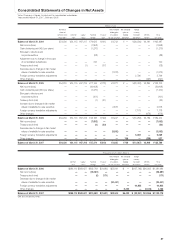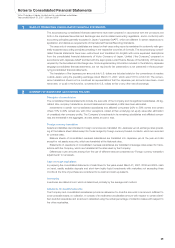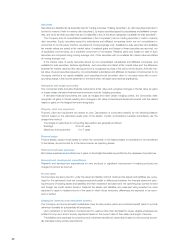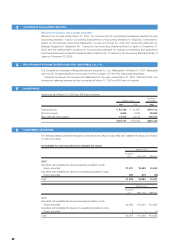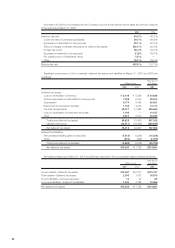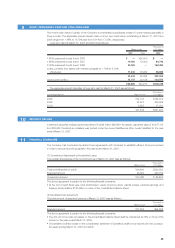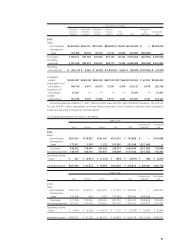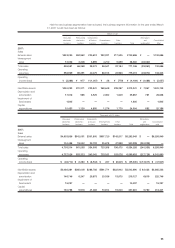JVC 2007 Annual Report Download - page 49
Download and view the complete annual report
Please find page 49 of the 2007 JVC annual report below. You can navigate through the pages in the report by either clicking on the pages listed below, or by using the keyword search tool below to find specific information within the annual report.
47
14 NET ASSETS
The Japanese Corporate Law (“the Law”) became effective on May 1, 2006, replacing the Japanese Commercial
Code (“the Code”). The Law is generally applicable to events and transactions occurring after April 30, 2006 and
for fiscal years ending after that date.
Under Japanese laws and regulations, the entire amount paid for new shares is required to be designated as
common stock. However, a company may, by a resolution of the Board of Directors, designate an amount not
exceeding one-half of the price of the new shares as additional paid-in capital, which is included in capital surplus.
Under the Law, in cases where a dividend distribution of surplus is made, the smaller of an amount equal to
10% of the dividend or the excess, if any, of 25% of common stock over the total of additional paid-in-capital and
legal earnings reserve must be set aside as additional paid-in capital or legal earnings reserve. Legal earnings
reserve is included in retained earnings in the accompanying consolidated balance sheets.
Under the Code, companies were required to set aside an amount equal to at least 10% of the aggregate
amount of cash dividends and other cash appropriations as legal earnings reserve until the total of legal earnings
reserve and additional paid-in capital equaled 25% of common stock.
Under the Code, legal earnings reserve and additional paid-in capital could be used to eliminate or reduce a
deficit by a resolution of the shareholders’ meeting or could be capitalized by a resolution of the Board of Directors.
Under the Law, both of these appropriations generally require a resolution of the shareholders’ meeting.
Additional paid-in capital and legal earnings reserve may not be distributed as dividends. Under the Code, how-
ever, on condition that the total amount of legal earnings reserve and additional paid-in capital remained equal to or
exceeded 25% of common stock, they were available for distribution by resolution of the shareholders’ meeting.
Under the Law, all additional paid-in capital and all legal earnings reserve may be transferred to other capital sur-
plus and retained earnings, respectively, which are potentially available for dividends.
The maximum amount that the Company can distribute as dividends is calculated based on the non-consolidated
financial statements of the Company in accordance with Japanese laws and regulations.
15 DERIVATIVE FINANCIAL INSTRUMENTS
The Companies use derivative financial instruments in the normal course of their business to manage the exposure
to fluctuations in foreign exchange rates and interest rates. The primary classes of derivatives used by the
Company and its consolidated subsidiaries are forward exchange contracts, currency option contracts and interest
rate swap contracts.
The Company and certain of its overseas subsidiaries have established regulations for financial transactions that
specify the persons with approval authority for derivative transactions. These derivative transactions are executed
and managed by the Company’s accounting department and the member of the Board of Directors in charge of
finance. The results of all such transactions are reported to the Director in charge of finance.
The following summarizes hedging derivative financial instruments used by the Companies and hedged items:
Hedging instruments: Hedged items:
Forward exchange contracts and currency Foreign currency trade receivables and trade
option contracts payables, future transaction denominated
Interest rate swap contracts in a foreign currency
Interest on bonds
The Companies evaluate the effectiveness of hedges by comparing the cumulative changes in cash flows from
or the changes in fair value of hedged items and the corresponding changes in the hedging derivative instruments.
As the Companies applied hedge accounting to all derivatives at March 31, 2007 and 2006, market value infor-
mation is not disclosed.


